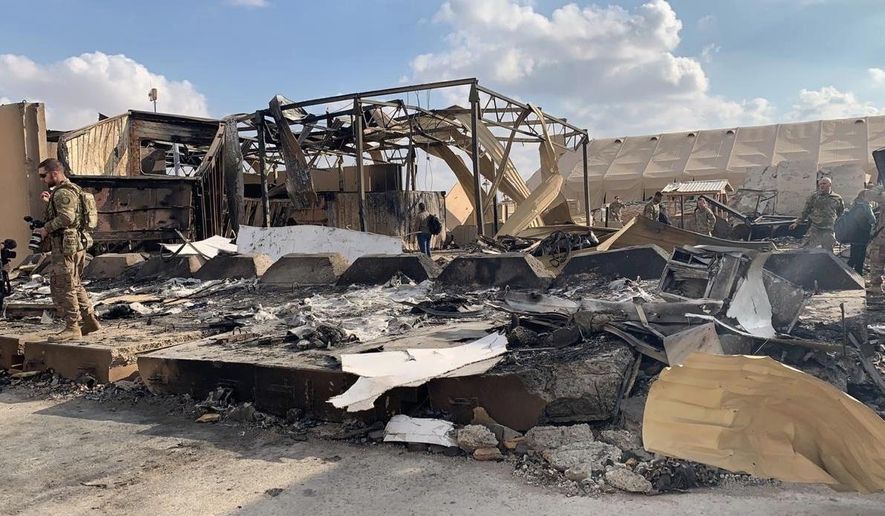Two secretive ballistic missile sites in western Iran were the launching pad for an attack on U.S. troops that brought the two countries to the brink of all-out war in January 2020, a leading international Iranian dissident group said Thursday, offering new detail on exactly how Tehran targeted Americans.
The Panj Pelleh missile site in Kermanshah province and another location in Kenesht Canyon just northeast of Kermanshah were the sources of the assault on Ain al-Asad air base in Anbar, Iraq, that injured more than 100 U.S. troops, according to the National Council of Resistance of Iran (NCRI), an umbrella group for Iranian dissidents who oppose the theocratic regime in Tehran.
NCRI said that sources with the Mujahedeen-e-Khalq (MEK), a leading Iranian opposition outfit, have gained new insights into the Iranian military’s infrastructure in the region.
“According to information received from MEK sources inside Iran, specifically from within the regime, including the Revolutionary Guards, the attacks were carried out from these two missile sites,” Ali Safavi, a member of the NCRI’s foreign affairs committee, said Thursday. “Based on information received recently these two sites, which are in each other’s proximity, about two to three kilometers apart from another on two sides of a mountain, are connected by underground tunnels.”
The Iranian missile attack on the al-Asad base 14 months ago came on the immediate heels of an American airstrike that killed top Iranian Gen. Qassem Soleimani. The ballistic missile attack led to more than 100 U.S. service members suffering brain injuries, though no American was killed in the incident.
Iran-backed militias in Iraq regularly target American forces and contractors, including several high-profile incidents over the past few weeks. But the January 2020 incident was different because it was launched from Iranian soil and appeared to be a direct Iranian military operation.
The NCRI information released Thursday charged that Iranian Brig. Gen. Amir Ali Hajizadeh, who commanded the Aerospace Corps of Iran’s Islamic Revolutionary Guard Corps, was stationed at the Panj Pelleh missile site and personally headed the operation.
Tensions between the U.S. and Iran have remained high during President Biden’s two months in office, though the administration has said it is open to diplomatic talks aimed at reviving an international deal to limit Tehran’s nuclear program. The two nations also are working together during diplomatic meetings in Russia this week in the hopes of salvaging the peace process in Afghanistan.
• Ben Wolfgang can be reached at bwolfgang@washingtontimes.com.




Please read our comment policy before commenting.